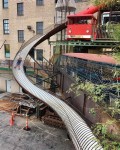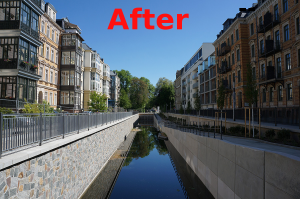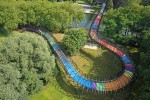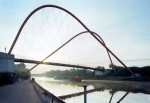A sprawling and little-known masterpiece of 1920s-modernist architecture deep in Germany’s rust belt narrowly escaped demolition – and still looks like it came from the future. A must-see for Bauhaus fans.
My birthday present this year was a surprise trip to a disused coal mine. Which was perfect because I’d been dying to go and that’s because this particular mine is not only located in a former rust belt with a fascinating history of environmental destruction and recovery, it’s also the world’s largest assemblage of architecture in the 1920s- and 30s-modernist style (often inaccurately called Bauhaus) outside of – oddly enough – Tel-Aviv. Continue reading “High modernism at the coal mine”
























